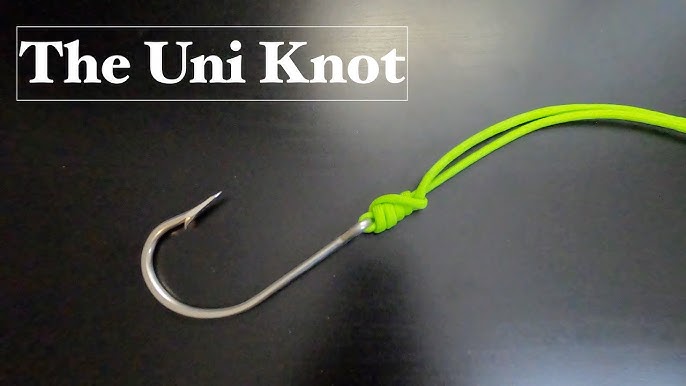Whether you’re casting your first line or refining your fishing skills, knowing how to tie a fishing knot is one of the most important things every angler must learn. A good fishing knot keeps your hook, lure, or swivel secure—and that can mean the difference between landing a big catch or losing it at the last second.
In this guide, we’ll teach you how to tie essential fishing knots step-by-step, explain when to use each knot, and share simple tips to make your knots stronger and more reliable.
Why tie a Fishing Knot Matter
Fishing knots aren’t just about holding things together. The right knot:
- Prevents the line from slipping
- Increases hook-setting power
- Maintains line strength
- Reduces tangles and breaks
Whether you’re using monofilament, fluorocarbon, or braided line, having a few go-to knots can make your fishing trips smoother—and more successful.
READ MORE: Fishing Tackle Guide
Top 3 Easy and Effective Ways to Tie a Fishing Knots(With Steps)
1. The Improved Clinch Knot (Best for Hooks and Lures)
The Improved Clinch Knot is a classic and one of the most-used fishing knots. It’s perfect for attaching hooks, swivels, or lures to your line.
How to tie it:
- Thread the end of your line through the hook eye.
- Wrap the tag end around the standing line 5–7 times.
- Take the end and pass it through the small loop closest to the hook eye.
- Then pass it through the big loop you just made.
- Wet the knot and pull tight slowly.
Best for: Monofilament line
Avoid with: Thick braided lines
2. The Palomar Knot (Strong and Simple)
If you want a super strong and quick knot, the Palomar Knot is your best bet. It’s especially great for braided lines.
How to tie a fishing knot:
- Double your line to make a loop, then pass the loop through the eye of the hook.
- Tie a loose overhand knot (like the start of tying your shoe).
- Pass the hook or lure through the loop.
- Wet the knot and pull on both ends to tighten.
Best for: Braided and fluorocarbon lines
Strength: One of the strongest fishing knots
3. The Uni Knot (Versatile & Easy to Learn)
The Uni Knot works for nearly everything—hooks, lures, swivels, and even connecting two lines.
How to tie it:
- Thread the line through the hook eye and double back to make a loop.
- Wrap the tag end around the double line 5–6 times, passing through the loop each time.
- Moisten and pull the tag end to tighten the coils.
- Slide the knot down to the hook.
Best for: All line types
Bonus: Can be used to join two lines (Double Uni Knot)
Pro Tips for how to tie a Fishing Knot
- Always wet the line before tightening. This reduces friction and prevents line weakening.
- Pull slowly and evenly when tightening the knot. Rushing can cause uneven tightening or knot failure.
- Trim the excess tag end after tying, but leave a small bit in case of slippage.
- Practice with thick cord or shoelace at home before heading to the water.
- Test your knot’s strength by giving it a firm tug before you cast.
Choosing the Right Knot for the Job
Different fishing situations call for different knots. Here’s a quick reference:
| Knot | Best Used For | Works Best With |
| Improved Clinch | Hooks, lures | Monofilament, Fluorocarbon |
| Palomar | Braided line, strong hooks | Braided, Fluorocarbon |
| Uni Knot | General use, joining lines | All line types |
If you’re fly fishing or surfcasting, there are other specialty knots (like the Arbor Knot, Surgeon’s Knot, or Snell Knot)—but the three above will cover most beginner to intermediate needs.
What You’ll Need to Practice how tie a fishing knot
To get started, all you need is:
- Fishing line (or even yarn to practice)
- A few hooks or swivels
- Scissors or clippers
- A little patience
Try practicing each knot 10–15 times to tie a fishing knot at home. Once your fingers get used to the motion, it becomes second nature.
Final Thoughts
Tie a fishing knot might seem tricky at first, but with a little practice, it becomes a valuable and rewarding skill. Whether you’re preparing for a weekend fishing trip or just learning the ropes, mastering knots like the Improved Clinch, Palomar, and Uni Knot will give you confidence and help you land more fish.
So next time you’re packing your gear, don’t forget: your rod and reel are only as strong as the knot tying them together.

